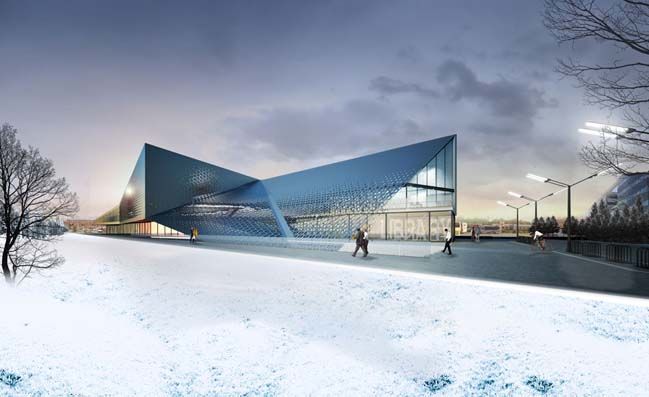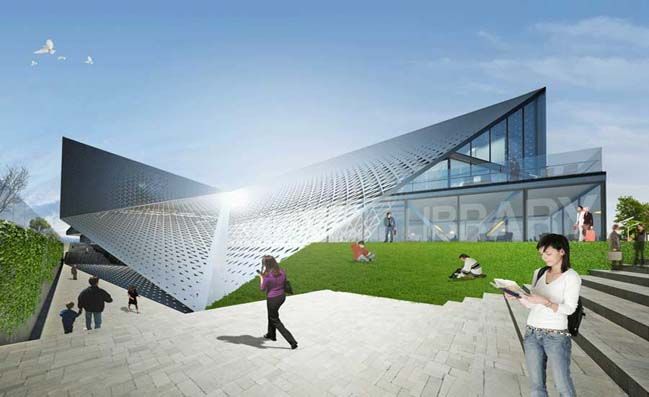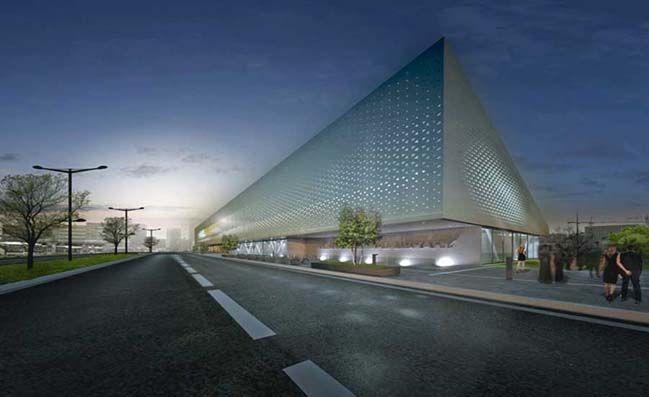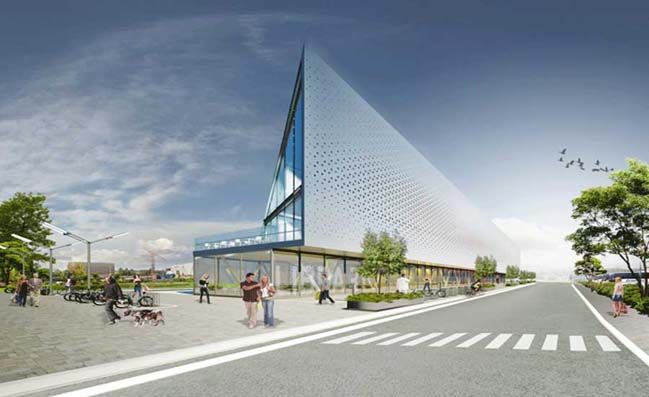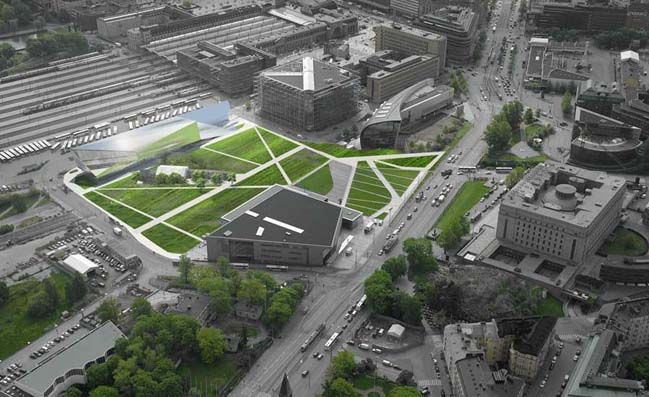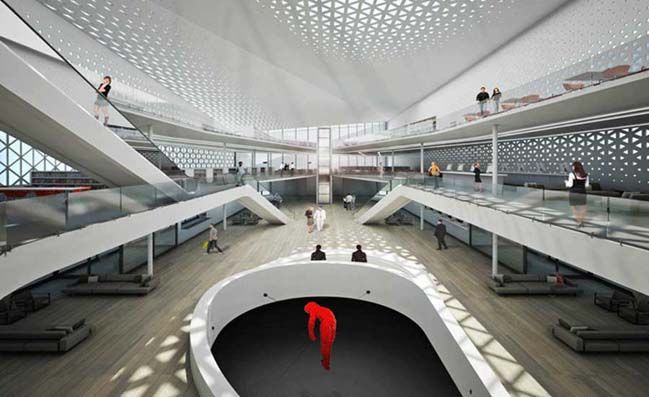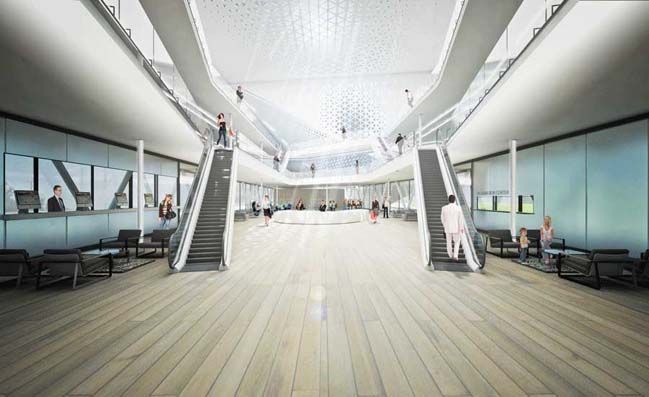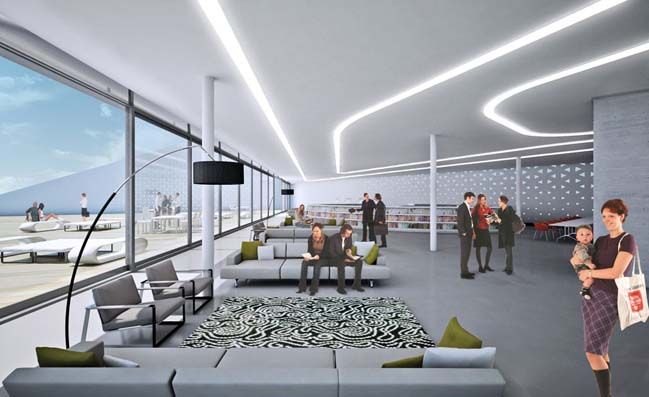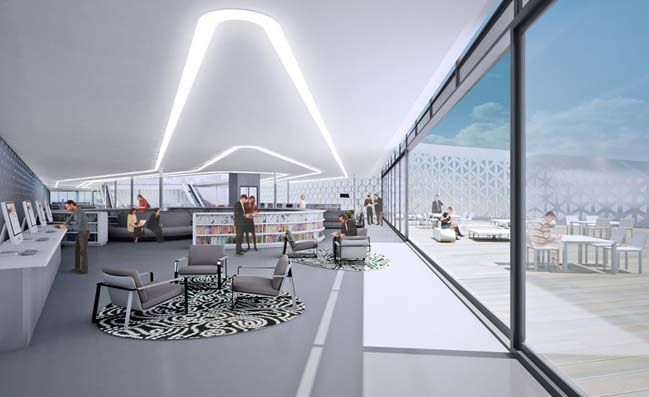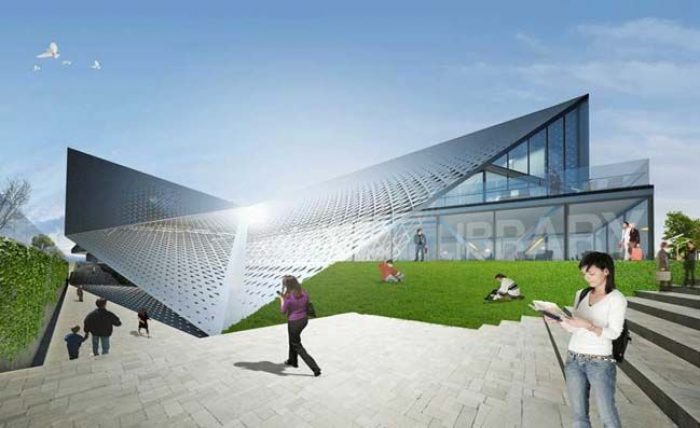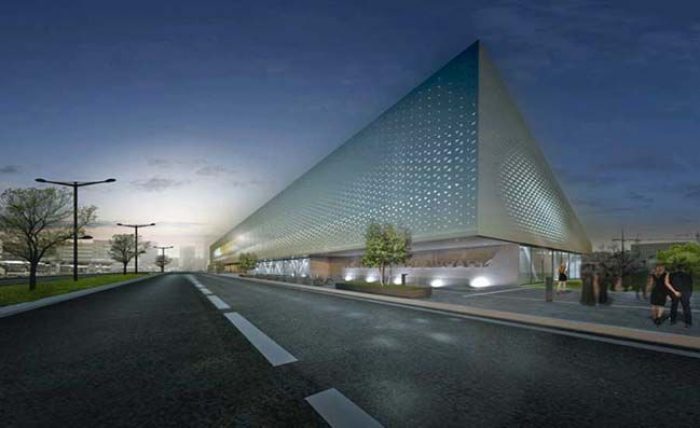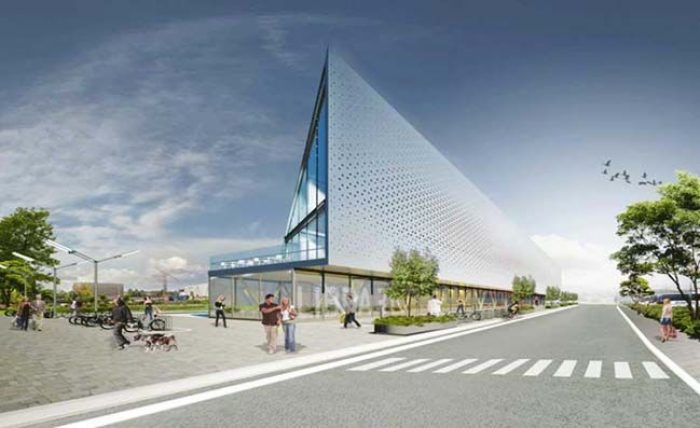Helsinki Central Library
Sustainable design projects have evolved tremendously over the years and now nearly every building tries to take advantage of some of these strategies. It has almost come to a point where it is unusual to read reviews about a new structure or design in which some green element or innovation is not a major contributing factor to the end result. This architectural movement has spread to the designs of nearly every building type imaginable, from skyscrapers to houses and everything in between.
For his proposal in the international competition for the design of the Helsinki Central Library, Jorge Hernandez de la Garza created the Valolaatikko, which means Light Box. In an attempt to take the library out of the realm of the ‘traditional’ aspects such as culture, entertainment, and technology were studied to form something modern and unique. The building sits on the landscape in an interesting way; parts of the roof extend down, hitting the ground plane, while still being conscious of the structures setting in relation to the park and bay nearby to achieve several different views and opportunities to see the cityscape of Helsinki. Besides this the building also tries to promote pedestrian and cycle access.
The porous dynamic skin created for the building not only helps to establish views of the surrounding landscape, but also contribute to the sustainable design of the project. The openings are optimized to promote daylight and passive solar heating to communal circulation areas and other various inhabitable spaces in the library. Showcasing the importance of sustainable design, the library will meet the highest standards for sustainability through the use of an ‘Integrated Approach’ throughout the design process. In the end the project will achieve a minimum rating of a recognized International Certification Scheme or LEED equivalent.
By: Kristin Hoover
